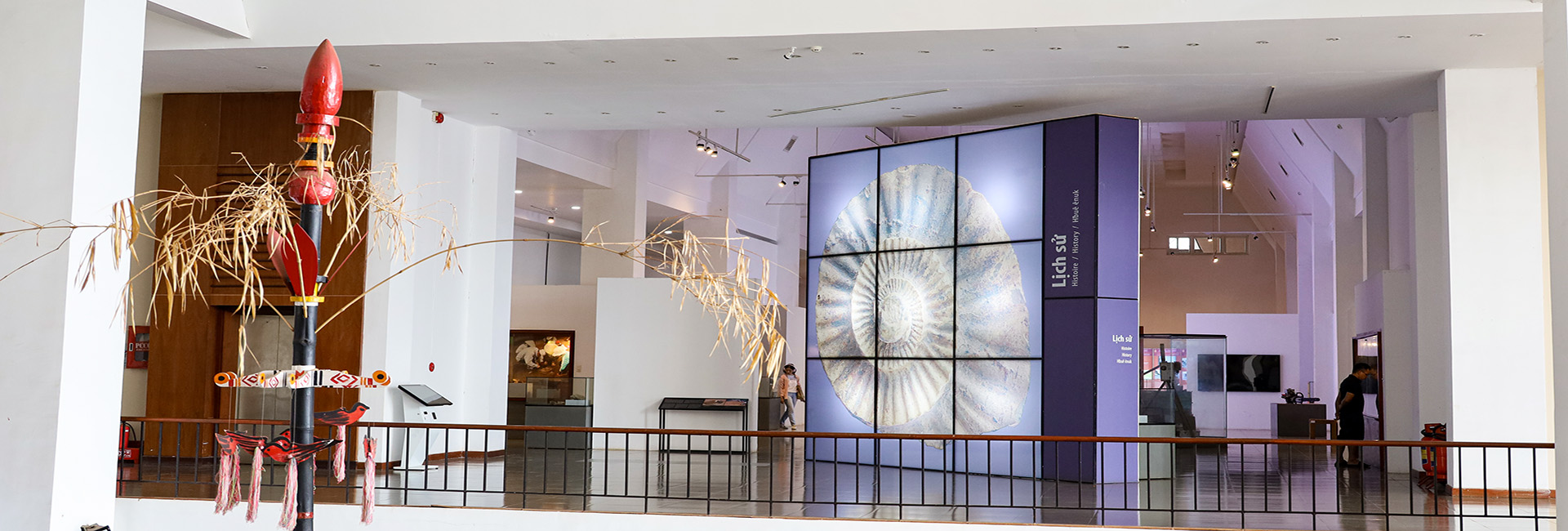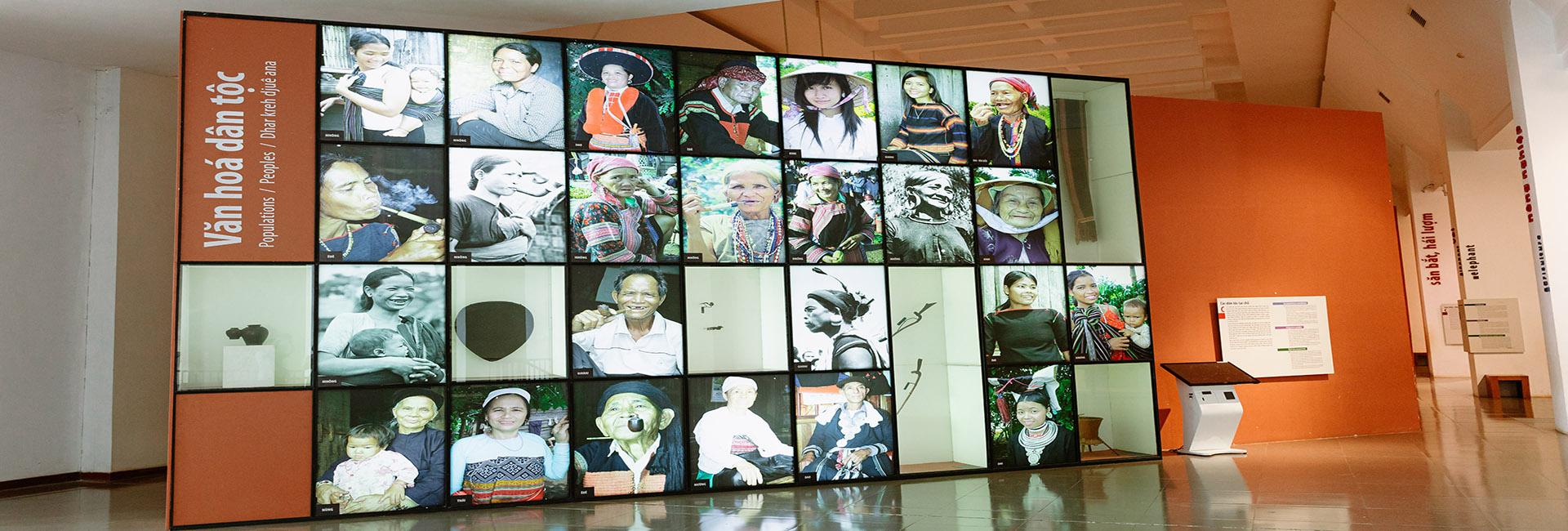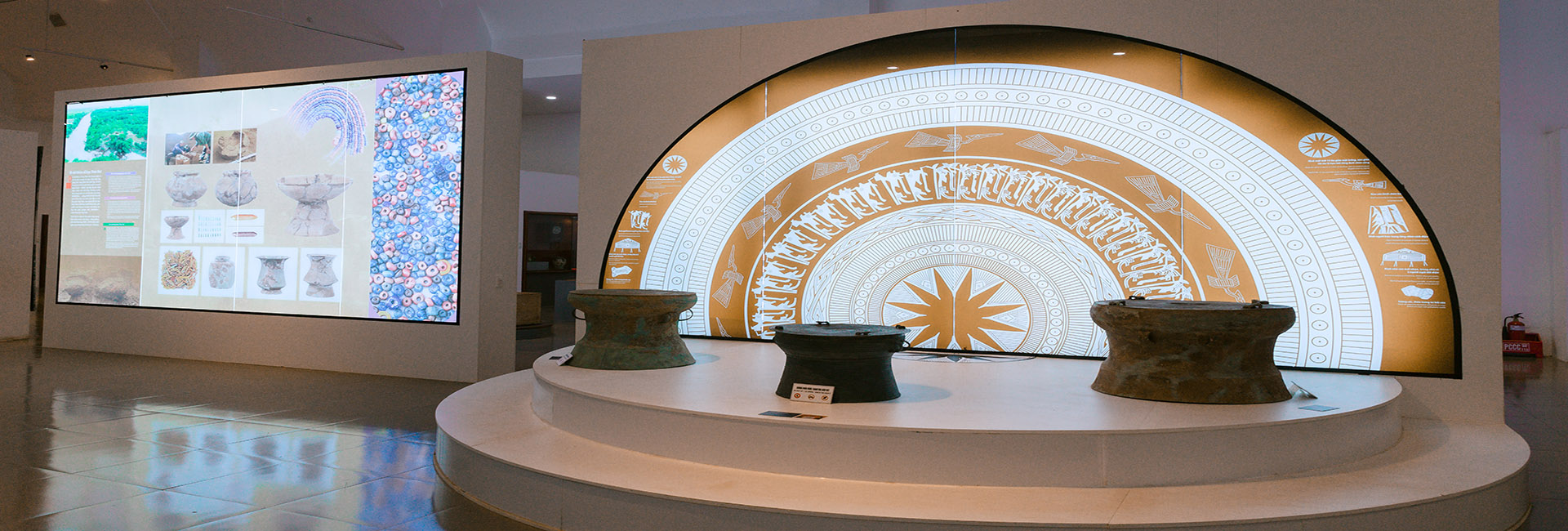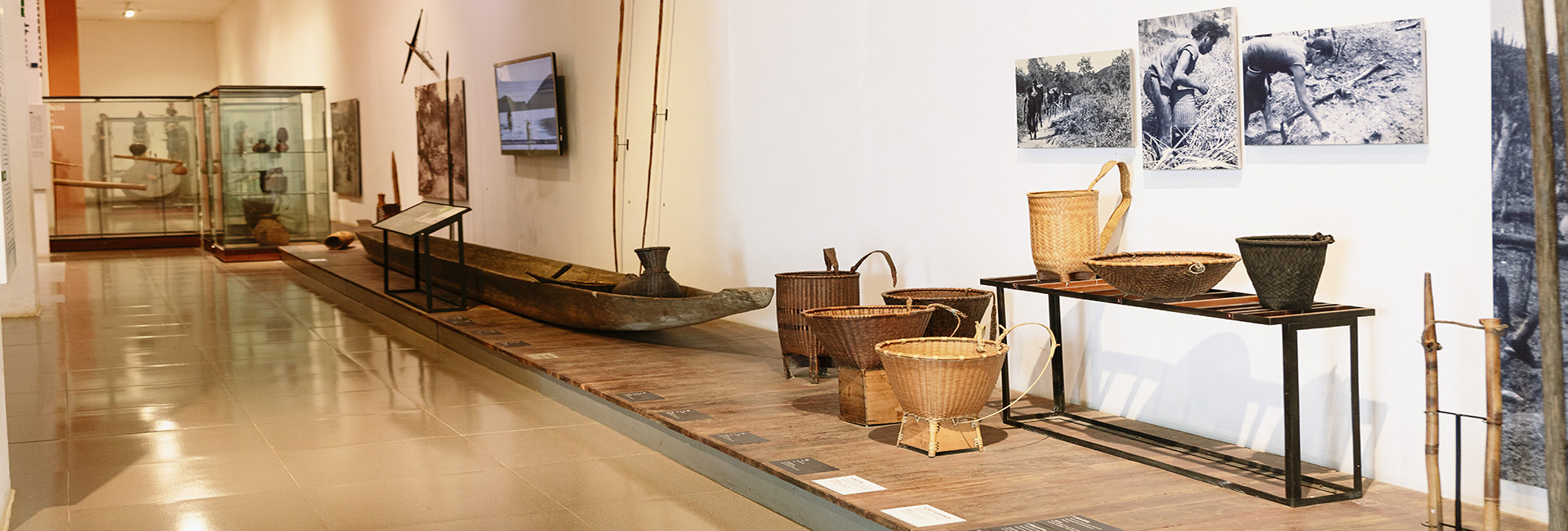HISTORICAL RELIC OF DUC THANH TRAN TEMPLE
Duc Thanh Tran Temple is located at 291 Tran Hung Dao Street, An Lac Ward, Buon Ho Town, Dak Lak province.
In 1947, on a small land plot in Buon Ho town, Krong Buk district (now Buon Ho town), people erected the Duc Thanh Tran Temple to pay homage, gratitude and honor to the national hero - Tran Hung Dao, who made great contritubtions for three times winning the Nguyen - Mong army, went into history, entered the legendary world and the spiritual world and became a sacred "Saint", worshipped by the entire people and nominated for one of the Four Immortals of the Vietnamese.
Initially, Tran Temple was temporarily built of trees and wooden walls, with corrugated iron roofs. In the middle of the Temple was an altar and Tran Hung Dao’s paper picture suspended. At the beginning, the people elected the Temple's Management Board to serve the management, rituals and incense monthly and yearly. In 1964, the Temple’s Management Board initiated and called on the people of Buon Ho town to donate more money to buy land, materials and dismantled the old temple, built Tran Temple with brick wall and corrugated iron roof.
To be in appearance spaciously as present, the temple was restorated, embellished and expanded many times; for example, in 1972, the main hall was renovated and expanded; more land area was bought in 2004, the foundation was paved in 2006 and the floor was made in 2012. However, Tran Temple couldn’t be built according to the traditional architecture of some Holy Father Temples in Hai Duong, Hanoi, Thanh Hoa, Ho Chi Minh City, etc because it was constructed in the war period and in the difficult socio-economic conditions of locality.
Duc Thanh Tran Temple is now located in a campus with the total area of 525.8m2, including categories such as Temple gate, front yard, worship site and backyard.
The Temple’s main worship site is the internal temple (harem), which is constructed to the back compared to Tien Duong, not to be divided into many rooms, and no closed doors as those in the Northern provinces but it consists only one room directly connected to the forecourt nave. The interior temple has no closed doors but it is decorated with wooden frames with dragon-cloud patterns in the aisle, whose two sides suspened with two sentences:
“Bach Dang Van Kiep, Vietnamese are grateful for
Ham Tu Chuong Duong, Nguyen Mong army were aghast”
The Horizontal Lacquered Board is 60 cm high, 3.6 m wide, illuminated with four Chinese characters: "Tran Trieu Hien Thanh" is solemnly hung right above the inner Palace’s entrance.
Tran Temple is worship place to commemorate the merits of national hero - Tran Hung Dao. Surrounding the sacred beliefs of the Holy Father - Tran Hung Dao, there are not only cultural heritages, but also a diverse and multi-colored intangible cultural heritage museum, instilled ethnic culture and folk art. Those are treasure of legends, myths, musical performances, and so on. Rituals at Tran Temple have long preserved the nation's traditional customs, partly recreating a period of heroic history of the nation, nurturing and fostering patriotism and love to seal members of the community together to build a rich and beautiful homeland.
In the anti-American resistance, Tran Temple was a place to supply food, medicines for the revolution, mainly providing the working teams along the H4 Line (codename of the district of Buon Ho, Krong Nang, Krong Buk). In addition, the Temple Management Board, led by old men Dang Van Dau, Nam Phung, Ha Hanh, mobiled and called upon the owner of Rossi coffee plantations to link up with Bao An forces in the H4 area to conceal for the supply of food, medicines and ammunition at Tran Temple.
During the period of resitance, Duc Thanh Tran Temple was a place to meet the Vietnamese people’s needs of folk beliefs, demonstrating the traditon “When you eat a fruit, think of the man who planted the tree” which summarized through thousands of years of nation building and defending, honoring the nation's outstanding hero, and showing cultural beauty, patriotism and ethnic pride of the people of Dak Lak province in particular and the Vietnamese people in general. For that sense, on September 29th, 2017, People’s Committee of Dak Lak Province issued Decision No.2717/QD-UBND recognizing that Tran Temple is a historical relic at the provincial level.
Some pictures of relics:
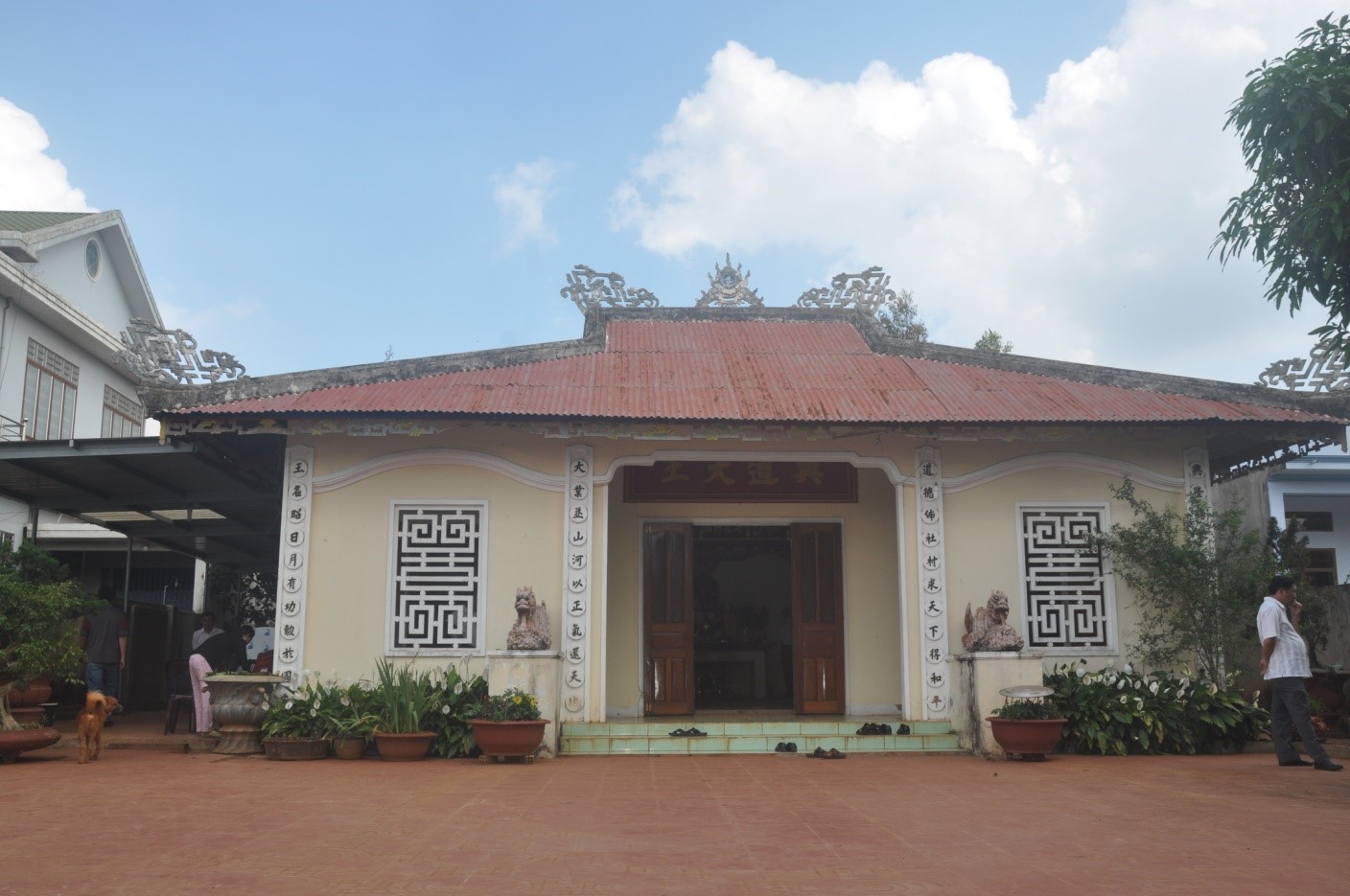
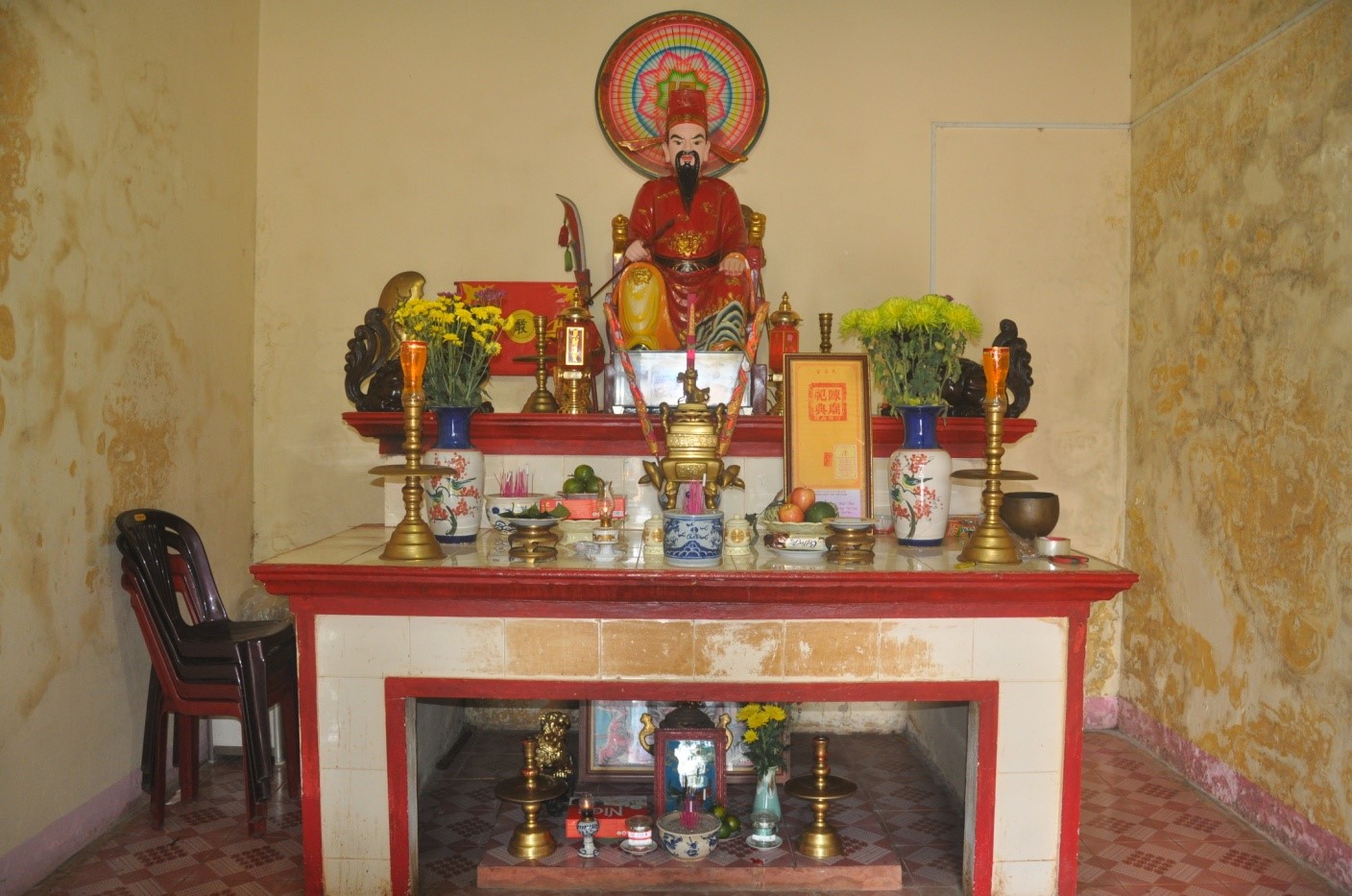

The Inner Palace’s altar comprises three floors. The ground floor is the worship place for Five Tigers (symbolizing of divine power that can eliminate evil spirits, guard at the temples) with two paintings of Five Tigers and a bronze censer placed in the center of the altar. Two bronze candlesticks and a bronze Tiger statue are put at the two sides to pray for fullness and peace. The second floor of the Inner Palace’s altar is 50 cm high and 1.8 m wide, where censers and a Tran Temple’s seal placed in a glass box with a width of 30 cm and a height of 60 cm.
This seal was brought respectfully from Tran Temple of Nam Dinh province to offer Dak Lak Relics Management Board of Tran Temple in Tet 2016 by Tran Quang Tuan journalist. On the altar are candlestick supports and a bronze censer decorated with unicorn shape symbolizing intelligence, strength, and soul control of ceremony practicers.
The third floor - the highest of the main altar is for the Tran Hung Dao plaster statue which is about 1.1m high, 50cm wide, placed on a 60cm thick and 20 cm high base. The statue was casted in the shape of a sitting dragon, with a sword on hand, in red outfits and a solemn expressed face to show strength, spirit against foreign invasion of a Vietnamese military genius. To the left of the Tran Hung Dao statue is a sword, an official costume and a pair of flowery- embroidered fabrics shoes and a glass cabinet of yellow ritual costumnes. The two sides of Tran Hung Dao statue are two wooden unicorn statues (According to the Vietnamese culture, the unicorn is an animal to signaling a good omen, a symbol for longevity, pedestal majesty and great happiness). In particular, the two sides of the altar also set up two 1.8 meter-high bronze swords lines with a decorative dragon patterns to increase the majesty and dignity of the Inner Palace’s shrine.
GD&TT





